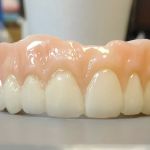How Much Does a Dental Filling Cost Without Insurance?
- Understanding Dental Fillings and Their Purpose
- Factors Affecting the Cost of Dental Fillings
- Types of Dental Fillings and Their Costs
- Alternatives to Dental Fillings
- Real-Life Experience with Dental Fillings Without Insurance
- Ways to Reduce the Cost of Dental Fillings
1. Understanding Dental Fillings and Their Purpose
Dental fillings are one of the most common procedures in modern dentistry, used to restore teeth that have been damaged by cavities or decay. When you get a dental filling, your dentist removes the decayed portion of the tooth and fills the space with a material that helps to restore the tooth’s function and structure. Dental fillings are essential for maintaining oral health, as they prevent further decay and damage, as well as protect the tooth from infection.
While fillings are necessary for people who have cavities, they come with varying costs depending on a variety of factors. If you’re wondering how much a dental filling costs without insurance, it’s important to understand the factors that influence these prices. In this article, we’ll explore the different types of fillings, the cost breakdown, and options for those who don’t have dental insurance.
2. Factors Affecting the Cost of Dental Fillings
Several factors can influence the cost of dental fillings, especially if you are paying out-of-pocket without insurance. Understanding these factors can help you better prepare for the financial aspect of the procedure. Here are some key factors to consider:
- Material Choice: The material used for the filling plays a significant role in the cost. Materials like amalgam (silver fillings) are generally cheaper, while composite resins (tooth-colored fillings) or porcelain fillings can be more expensive due to their aesthetic appeal and durability.
- Location of the Filling: Fillings in different areas of the mouth may vary in cost. For instance, fillings on the back teeth (molars) are usually more expensive due to their larger size and the complexity of the procedure.
- Size and Depth of the Cavity: If the cavity is large or deep, the procedure may require more time and a larger amount of filling material. This can increase the overall cost of the procedure.
- Geographic Location: Dental prices vary greatly depending on where you live. In larger cities or areas with a higher cost of living, you may find that dental procedures, including fillings, are more expensive than in rural or suburban areas.
In addition to these factors, the dentist’s experience, the dental office’s overhead costs, and even the time of day you schedule your appointment can impact the cost of a dental filling. It's always a good idea to inquire about the pricing upfront to avoid surprises later.
3. Types of Dental Fillings and Their Costs
Dental fillings come in a variety of materials, each with its own set of benefits and cost considerations. Here’s a breakdown of the most common types of dental fillings and their average costs when paying without insurance:
- Amalgam Fillings (Silver Fillings): Amalgam is a durable, affordable material made from a blend of metals, including silver, mercury, and tin. Amalgam fillings are commonly used for back teeth and are generally the least expensive option. The cost for an amalgam filling ranges from $50 to $150, depending on the size and location of the cavity.
- Composite Fillings (Tooth-Colored Fillings): Composite fillings are made from a resin material that can be color-matched to the natural shade of your teeth. These fillings are ideal for front teeth or visible areas, offering a more aesthetically pleasing result. Composite fillings tend to be more expensive, with costs ranging from $90 to $250 per filling.
- Porcelain Fillings (Inlays or Onlays): Porcelain fillings are custom-made to fit your tooth and are the most durable and aesthetic option. They are typically used for larger cavities or for teeth that are highly visible. Porcelain fillings are among the most expensive, with prices ranging from $250 to $4,500, depending on the complexity and the location of the cavity.
- Gold Fillings: Gold fillings are a long-lasting and highly durable option but come at a premium price. The cost of gold fillings can range from $250 to $4,500, making them one of the most expensive choices for dental restorations.
The choice of material will depend on your priorities, such as appearance, durability, and budget. While gold and porcelain fillings may offer superior durability, composite and amalgam fillings are more budget-friendly alternatives.
4. Alternatives to Dental Fillings
While dental fillings are a common and effective solution for cavities, they are not always the only option. Depending on the extent of the tooth damage, there are several alternatives to consider:
- Crowns: If a cavity is too large to be filled, a crown may be needed to restore the tooth’s shape and function. Crowns cover the entire tooth, making them an ideal solution for more severe cases.
- Bonding: Dental bonding involves applying a tooth-colored resin to the tooth to restore its shape. It’s an affordable and quick solution for smaller cavities and minor tooth damage.
- Root Canals: If the decay has reached the tooth’s pulp, a root canal may be necessary. This procedure involves removing the infected pulp and sealing the tooth. It is more expensive than a filling but essential for saving the tooth.
Each of these alternatives comes with its own set of costs and benefits. Your dentist will help you determine the best treatment for your specific needs.
5. Real-Life Experience with Dental Fillings Without Insurance
I recently had a dental filling done without insurance, and while the cost was higher than I expected, the process was smooth, and the result was well worth it. I opted for a composite filling to ensure the best aesthetic result for a cavity in a visible spot. The procedure itself was relatively quick, and I experienced minimal discomfort during and after the treatment.
Without insurance, the cost of my composite filling came to around $200, which was a bit of a stretch for my budget. However, considering the longevity and the aesthetic advantages of composite material, I felt it was the best option for my situation. It’s important to weigh the benefits of a filling material against the cost, and in my case, it was a decision I don’t regret.
6. Ways to Reduce the Cost of Dental Fillings
While dental fillings can be expensive, there are several ways to reduce the cost, especially if you’re paying without insurance:
- Shop Around: Prices for dental fillings can vary between practices, so it’s worth getting quotes from multiple dentists to find the best price.
- Consider Dental Schools: Many dental schools offer lower-cost services provided by dental students under the supervision of experienced faculty. This can be a more affordable option for basic dental procedures like fillings.
- Ask About Payment Plans: Some dental offices offer payment plans or financing options to help make the procedure more affordable. Be sure to inquire about these options before committing to treatment.
By exploring these options, you may be able to reduce the out-of-pocket cost of dental fillings and make dental care more accessible.
7. Explore More with Dentistry Toothtruth
If you’re concerned about the cost of dental fillings or looking for affordable options, I highly recommend visiting Dentistry Toothtruth. They offer expert advice, as well as resources to help you make informed decisions about your dental care.
For more information on dental fillings, their costs, and how to make your dental care more affordable, check out their resources and schedule a consultation today!







 Mission Dental Arts5.0 (167 review)
Mission Dental Arts5.0 (167 review) Bristol Dental Group4.0 (183 review)
Bristol Dental Group4.0 (183 review) Assembly Square Family Dental4.0 (4 review)
Assembly Square Family Dental4.0 (4 review) Gregg W Jepson DMD5.0 (7 review)
Gregg W Jepson DMD5.0 (7 review) Panther Pediatric Dentistry - Euclid's Leading Sedation Location4.0 (301 review)
Panther Pediatric Dentistry - Euclid's Leading Sedation Location4.0 (301 review) Dr. Dunn H. Cumby, DDS4.0 (14 review)
Dr. Dunn H. Cumby, DDS4.0 (14 review) The Importance of Oral Health Education During Pregnancy for a Healthy Pregnancy
The Importance of Oral Health Education During Pregnancy for a Healthy Pregnancy Best Tips for Brushing Your Teeth Properly for Healthy Gums: Essential Techniques for Oral Health
Best Tips for Brushing Your Teeth Properly for Healthy Gums: Essential Techniques for Oral Health Why Skipping Dental Checkups Can Lead to Bigger Oral Health Problems
Why Skipping Dental Checkups Can Lead to Bigger Oral Health Problems Advantages of Porcelain Dental Restorations
Advantages of Porcelain Dental Restorations How Can Diabetes Cause Tooth and Gum Problems? Preventing and Managing Oral Health Issues
How Can Diabetes Cause Tooth and Gum Problems? Preventing and Managing Oral Health Issues Healthy Habits for Promoting Good Oral Health and Hygiene: Tips for a Healthy Smile
Healthy Habits for Promoting Good Oral Health and Hygiene: Tips for a Healthy Smile